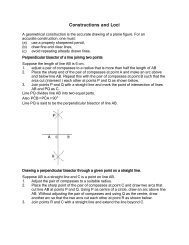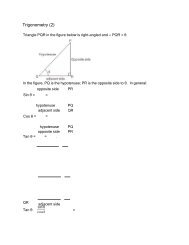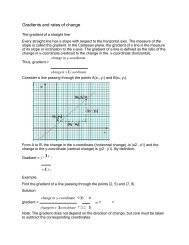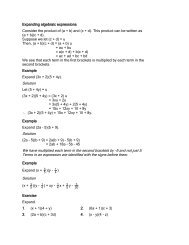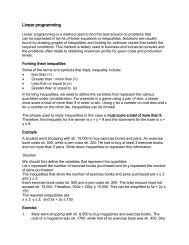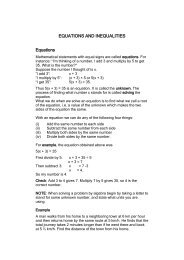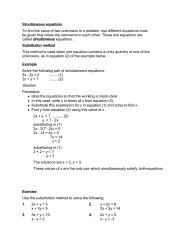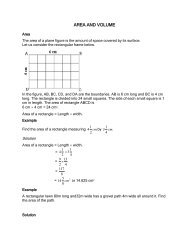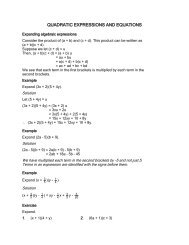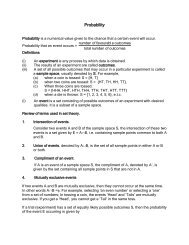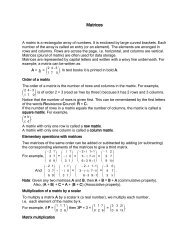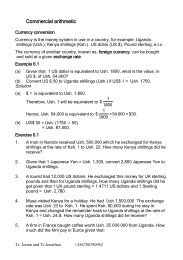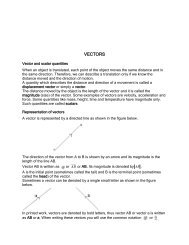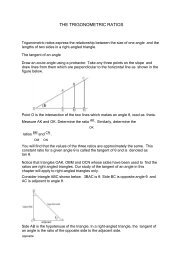J20
You also want an ePaper? Increase the reach of your titles
YUMPU automatically turns print PDFs into web optimized ePapers that Google loves.
Consider a reflection of the unit square in the x-axis. Point I(1, 0) is mapped<br />
Onto I 1(1, 0). Point J(0, 1) is mapped onto J 1(0, -1). Point O(0, 0) is mapped<br />
onto O 1(0, 0) and point K(1, 1) is mapped onto K 1(-1, -1).<br />
1<br />
0 <br />
1<br />
0<br />
The position vectors of I 1 = and J1 = form the matrix <br />
0<br />
1<br />
0<br />
1<br />
1<br />
0<br />
When the position vectors of the unit square are premultiplied by we<br />
0<br />
1<br />
get,<br />
O1 I1<br />
J1<br />
K1<br />
1<br />
0<br />
0<br />
1 0 1<br />
<br />
= 0<br />
1 0 1 <br />
0<br />
1<br />
0<br />
0 1 1<br />
<br />
0<br />
0 1<br />
1<br />
<br />
The result is the matrix formed by the position vectors of the images of the unit<br />
1<br />
0 <br />
square under reflection in the x-axis. This means that represents a<br />
0<br />
1<br />
reflection in the x-axis.<br />
In order to determine a matrix of transformation, we need to know the kind of<br />
transformation it is, find the images of points I and J under that transformation, and then<br />
write their position vectors in matrix form.<br />
Example<br />
A triangle with vertices P(2, 2), Q(5, 1) and R(5, 6) is rotated through 90 0 anti-clockwise<br />
about the origin. Find the transformation matrix and the coordinates of its image.<br />
Solution<br />
The images of I and J under this transformation are I 1 (0,1) and J 1 (-1, 0). Therefore, the<br />
0<br />
1<br />
<br />
matrix of transformation is .<br />
1<br />
0<br />
When we premultiply the matrix resulting from the position vectors of points P, Q and R<br />
by the matrix of transformation, we get:



